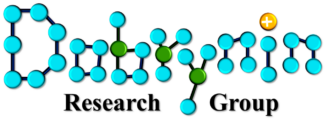Ryan Sayko, Zhen Cao, Heyi Liang, and Andrey V. Dobrynin
Nanoparticles have been recently shown to be able to act as effective adhesives capable of binding two soft materials together. We performed coarse-grained molecular dynamics simulations to study contact mechanics of soft nanoparticles at the interfaces between two elastic surfaces. Depending on the nanoparticle size as well as the substrates’ elastic and interfacial properties, a nanoparticle at the interface between two elastic substrates could be in a bridging or Pickering state. The degree of penetration of a nanoparticle into a substrate is shown to be determined by nanoparticle size, strength of nanoparticle–substrate interactions, and nanoparticle and substrate elastic properties. Using the weighted histogram analysis method, we calculated the potential of mean force for separation of two substrates whose interface was reinforced by deformable nanoparticles. These simulations show that interface reinforcement is a function of nanoparticle size and elastic modulus. The most effective reinforcement of the interface was observed for the softest nanoparticles which could result in close to 8 times increase in the work of adhesion.

